Bar-Ends
Handle bar extensions first appeared on mountain bikes in 1983 to expand the bar area and help with climbing and comfort. Aerodynamics was likely not an issue 1). By the mid-90's, at the height of the very-narrow flat bar era, every MTB company offered them, along with Grip Shift, elastomer suspension and gel seats.
Bars ends have all but disappeared today. With modern wide bars, bar-ends make it difficult to reach brakes and modern MTB courses are more technical than before, requiring the leverage of width.2) Plus wider bars make it more likely for bar ends to hook something as they pass it.
The first bar-end incarnation were the 1983 Moots birch-wood “Road Handles”, mounted mid bar.
See BikePro's 1996 long list of bar ends for sale. Compare that with Jenson's 2022 list of only two plastic short bar ends.
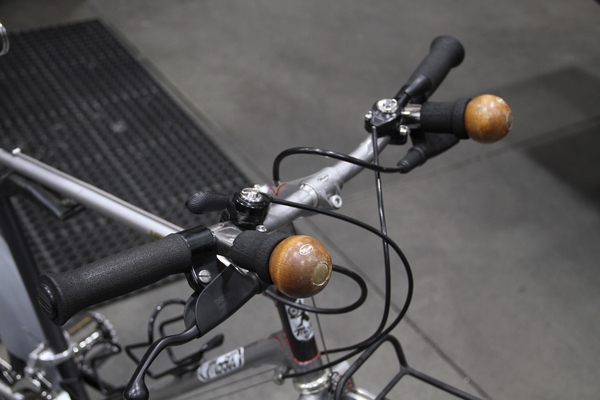
1983 Moots Road Handles.
Made with aluminum, foam base and birch-wood knobs.
Mounted in the middle of “super-wide” 630mm handlebars.
moots
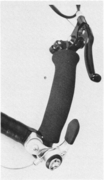
1987 Weissenrieder Jet Bars.
Integrates brakes and shifters into the bar-end, requiring your hands to be on the bar-ends 100%.
mombat
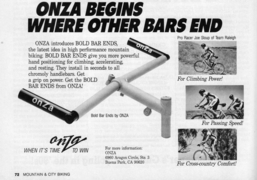
1989 Onza Bold Bar Ends, April 1989 ad
mombat
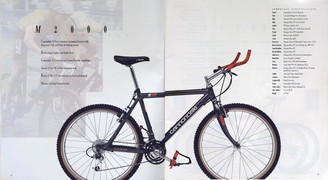
1992 Cannondale M-2000 with XYZ bar ends. The first production MTB shipped by default with bar ends. 1992 Cannondale catalog.
vintagecannondale
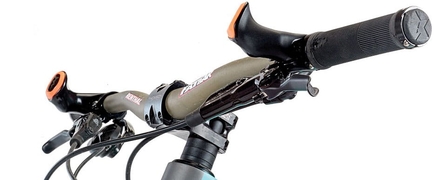
2022 SQlab Innerbarends. Now bar-ends work with wide bars.
sq-lab
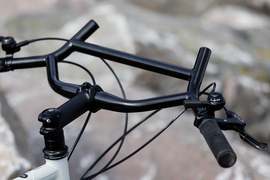
2022 Surly Moloko bar, 735mm. “If variety is the spice of life, then the Moloko Bar oozes umami at every bend. ”
surlybikes
Handle bars widths evolved with the times, from wide bars to handle Repack, then narrow to help with both weight and to help road cyclists transition to MTB and now back to concentrating on going downhill, fast.
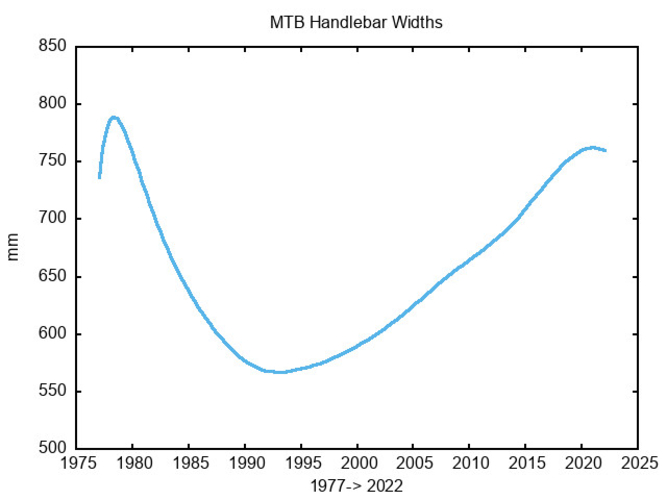
Handlebar widths 1977→2022. mtbtimeline 3)